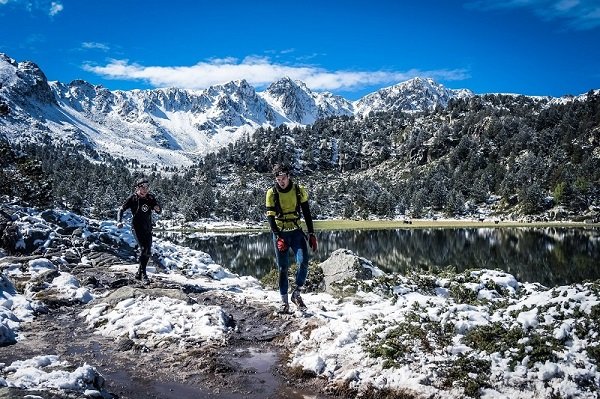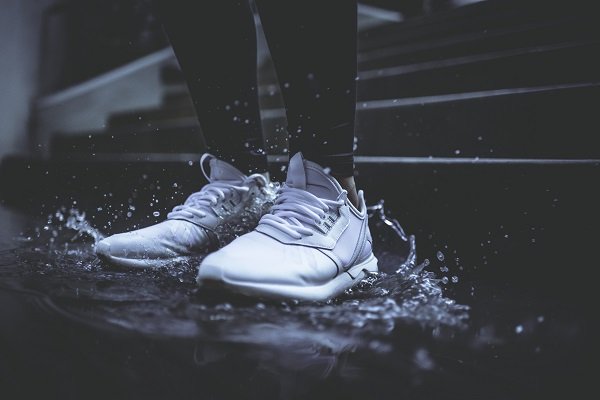In winter with the biting cold and the sun setting earlier and earlier, the desire to stay warm on your sofa is more tempting than usual. While there is nothing we can do about the usual excuses of fatigue, lack of time, going out with friends or going on TV, there is one bad excuse that we can fight against: the cold!
Summary :
Well equipped to run in the cold

When temperatures drop or when the cold is humid and the weather overcast, it is essential to apply the three-layer rule well known to mountain people and hikers.
This multilayer system understand :
-
a breathable first layer,
-
a second insulating layer,
-
a third windproof and water-repellent layer.
To note : the cold does not prevent running, especially in France where the thermostat rarely drops below -15 ° C. Thus, above these temperatures, the practice of a physical activity in the open air remains beneficial and recommended for the body and the mind. If you go out sufficiently well equipped, you do not risk catching the famous “cold snap”. On the contrary, theexercise strengthens immunity.
Attention : in this article we are addressing regular runners. We strongly recommend that beginners make an appointment with their general practitioner in order to carry out a health check before embarking on any new sporting activity.
Zoom brand: Summit Outdoor is a brand of thermoregulating technical clothing ideal for outdoor activities and sports. In case of very cold temperatures, you can combine one of their extreme t-shirts with extreme line tights which will serve as a breathable first layer. Summit outdoor also offers balaclavas and neck warmers. Find all the products on our Summit Outdoor brand page.
Running in winter: keep your head warm
Running in winter cannot be improvised, especially if you live in an area where temperatures can regularly drop below zero. Often we have the reflex to cover the upper body by putting on a warm or windbreaker jacket and we forget the main one, i.e. protect the extremities of the body. Indeed, the feet, hands and especially the head and ears must be protected from the cold. To avoid heat loss without sweating, you will need to choose a breathable and water-repellent hat. The headband can also be an excellent solution depending on the weather conditions and the intensity of your session.
Our pro tip: the neck strap, an essential accessory for the athlete in winter. Very versatile, it protects the neck and / or the head as needed and, if you are too hot, it slips around the wrist so as not to burden you. The famous Buff brand has made this essential product its specialty.
Running in winter: protect your hands from the cold
Nothing more unpleasant than run with cold hands. To prevent your fingers from going numb from the cold and spoiling your running trip, it is essential to wear gloves. As for the beanie, they are to be chosen in breathable and water-repellent technical fabric to protect you from the rain while allowing perspiration to pass through. At the start of winter, use thin, not too thick gloves. As the temperatures go down, it will probably be necessary to consider opting for more insulating gloves, in fleece for example, or even for mittens! There are even special running gloves that can be transformed into a mitten as needed. Also think about thermal touch gloves if you use your phone to record your session or to take photos.
Which running shoes in winter?

The shoes are most definitely therunning gear the most important and the one in which athletes spend the most money. Indeed, a poorly fitting shoe at your foot can not only cause discomfort but above all, it can end up cause injury. And injuries are the fear of athletes since, depending on the severity, they can delay the return to training from a few days to several months.
For shoes as for everything, there are two schools namely pro-waterproofing and pro-breathability. So should you choose totally waterproof shoes, in Gore-Tex, simple water repellent or none of that?
Our answer is that there is not just one. Again, that will depend on a multitude of factors. First, the type of land that you train on. If you are running on a trail, you should rather consider trail shoes waterproof with “crampons” to protect you from mud or snow. On the contrary, if you run on the road or on the track, choose shoes that are lighter, dynamic, breathable and with a smoother sole. You will also need to take into account weather situation. If the track or the road is completely frozen or covered with snow, it is better to be equipped with non-waterproof breathable trail shoes which will give you more grip on slippery ground while allowing the foot to breathe. If you are worried about being too cold, you can also play on the socks. Choose them warm and high, in merino wool or technical fabric. The gaiters can also provide additional protection for your Gore-tex shoes if you plan to run on a particularly muddy or snowy trail path.
In any case, we advise you not to choose running shoes too narrow because compression speeds up cooling.
Running in winter in complete safety, think about visibility!
In winter, with the days getting shorter, we can quickly find ourselves running in complete darkness. This lack of light can quickly turn out to be dangerous, especially in town or near roads. In order not to end up in this situation, choose clothes that are visible or have reflective bands. Likewise, if you run in total darkness, a headlamp will quickly become your best ally to see and be seen during your running sessions.
Discover on our store all our winter running clothes and sports accessories in the sport category.

